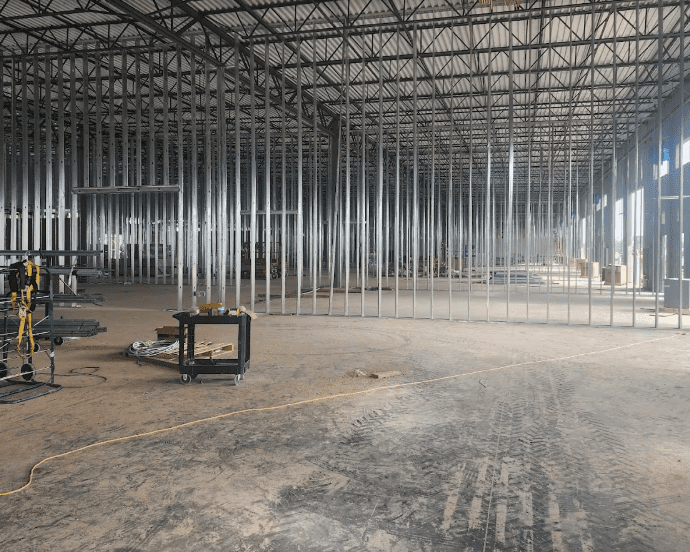Construction is a broad field that covers a wide variety of building types, each with its own set of processes, regulations, materials, and purposes. Two primary categories are residential construction and commercial construction, and while they may seem similar at a glance—both involve planning, designing, and building structures—the differences between them are substantial.
In this blog, we’ll explore the major distinctions between commercial and residential construction to help homeowners, business owners, and developers better understand what sets them apart.
1. Purpose and Function
Residential Construction focuses on buildings meant for people to live in. This includes:
- Single-family homes
- Duplexes
- Townhomes
- Apartments
- Condominiums
Commercial Construction, on the other hand, involves buildings intended for business or public use, such as:
- Office buildings
- Retail stores
- Warehouses
- Schools
- Hospitals
- Hotels
For larger projects, businesses often rely on a trusted construction commercial company in Georgetown, TX to ensure code compliance and high standards.
2. Design and Complexity
Residential buildings typically have simpler designs, often using traditional layouts that prioritize comfort, privacy, and aesthetics.
Commercial buildings are more complex in design. They often involve:
- Larger floor plans
- Advanced mechanical systems (HVAC, fire suppression)
- Accessibility standards (ADA compliance)
- Higher electrical and plumbing capacity
Key Difference:
Commercial projects usually require specialized design expertise to meet structural, safety, and accessibility codes that go beyond those in residential construction.
3. Building Codes and Regulations
Residential Construction must comply with local building codes related to zoning, safety, and occupancy, but the requirements are generally more straightforward.
Commercial Construction involves stricter and more extensive regulations. These may include:
- Fire safety standards
- Occupancy limits
- Emergency exits
- Elevator codes
- Energy efficiency standards
To navigate these complexities, working with a licensed construction commercial company in Georgetown, Texas can help streamline approvals and ensure full compliance.
4. Materials and Equipment Used
In residential projects, materials like wood, drywall, asphalt shingles, and PVC piping are commonly used.
Commercial buildings often require:
- Steel frames
- Reinforced concrete
- Commercial-grade HVAC systems
- Fireproofing materials
- Energy-efficient glass
Key Difference:
Commercial construction uses more durable, high-capacity materials suited for heavy use and compliance with safety regulations.
5. Construction Timeline
Residential construction usually takes less time. A single-family home may take anywhere from 3 to 9 months to build.
Commercial projects are more time-intensive due to:
- Larger size
- Complex engineering
- Permit approvals
- Specialized labor
For smoother and faster delivery, hiring a reliable commercial general contractor in Round Rock, TX is a smart move for business owners.
6. Project Cost and Budgeting
Residential construction costs are generally lower and more predictable.
Commercial construction costs are higher due to:
- Larger scale
- Advanced systems and materials
- Compliance and safety requirements
- Labor and specialty subcontractors
Key Difference:
Commercial construction demands larger budgets and more financial planning, often requiring investors or corporate funding.
7. Construction Team and Expertise
Residential Construction Teams include:
- General contractors
- Carpenters
- Plumbers and electricians
- Roofers
Commercial Construction Teams often include:
- Structural engineers
- Architects
- Commercial project managers
- Specialized subcontractors
- Safety inspectors
Key Difference:
Commercial construction involves a broader and more specialized team due to the complexity of the project.
8. Permits and Inspections
In residential builds, permits are usually simpler to obtain and inspections are fewer.
Commercial construction must go through:
- Environmental assessments
- Fire inspections
- ADA compliance checks
- Utility approvals
Key Difference:
Commercial permitting and inspection processes are more exhaustive, involving multiple agencies and checkpoints.
9. Maintenance Requirements
Residential properties generally have lower maintenance needs.
Commercial buildings require regular maintenance of:
- HVAC systems
- Elevators
- Security systems
- Parking structures
Key Difference:
Ongoing commercial property maintenance is more complex and costly due to the number of systems involved and the expectations of public safety.
10. Financing and Ownership
Residential projects are often financed through personal loans or mortgages.
Commercial projects might be funded by:
- Investors
- Banks with commercial lending services
- Government grants (for public-use buildings)
Key Difference:
Commercial construction financing involves more rigorous evaluation, higher risk, and often multiple stakeholders.
Final Thoughts
Understanding the differences between commercial and residential construction is crucial whether you’re building a home, opening a new business, or expanding an existing property portfolio. Each type requires different strategies, budgets, timelines, and levels of expertise.
If you’re planning a project and unsure which category it falls under—or what that means for your planning and execution—consulting with a professional builder or general contractor is your best first step.
Need Construction Services in Texas?
If you’re looking for reliable construction services for either residential or commercial projects in Round Rock, Austin, or Georgetown, Texas, trust the experts at A & A 1st Choice LLC.
📍 Locations: Round Rock, Austin, and Georgetown, Texas
📞 Call Us: +1 512-767-2935
Whether you’re planning a dream home or a new office building, we have the expertise to bring your vision to life.


